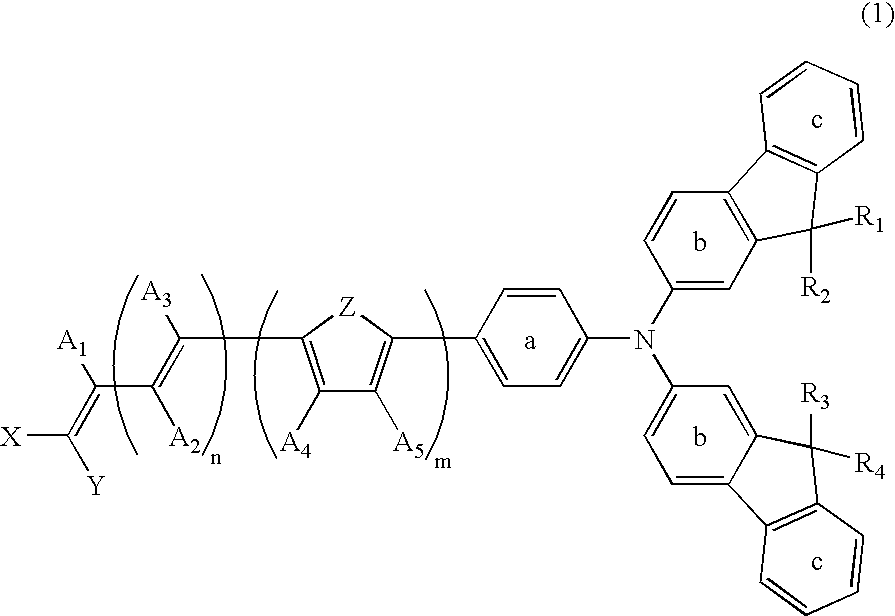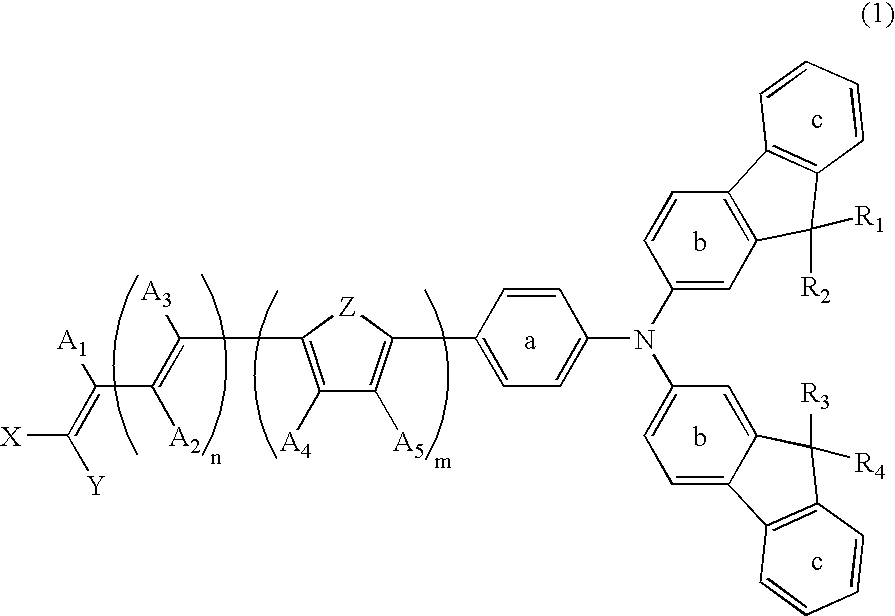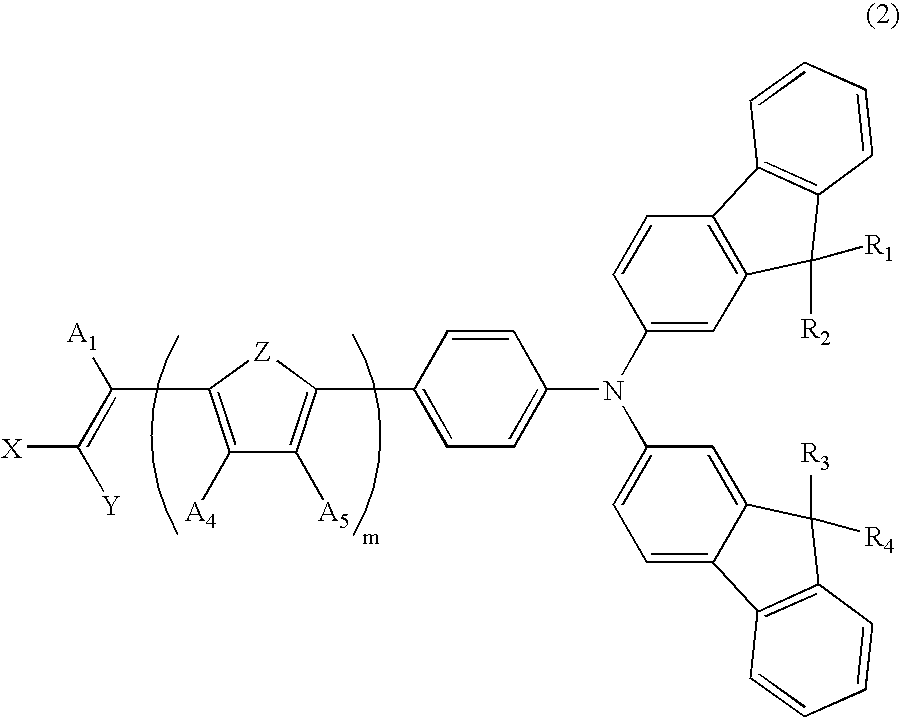Dye-Sensitized Photoelectric Conversion Device
- Summary
- Abstract
- Description
- Claims
- Application Information
AI Technical Summary
Benefits of technology
Problems solved by technology
Method used
Image
Examples
synthesis example 1
[0090]56.8 parts of fluorene, 200 parts of methanol, 37 parts of 63% sulfuric acid aqueous solution, 31 parts of iodine, and 34 parts of 34% iodic acid aqueous solution were stirred at 60° C. for 5 hours. After completion of the stirring, the resultant was filtrated, and it was then washed with 100 parts of water twice. Thereafter, the resultant was dried at 70° C. overnight. After completion of the drying, the resultant was recrystallized in methanol to obtain 60 parts of 2-iodofluorene in the form of white powders.
synthesis example 2
[0091]20 parts of 2-iodofluorene was dissolved in a mixed solution of 114 parts of dimethyl sulfoxide (DMSO) and 23 parts of tetrahydrofuran (THF), and the thus obtained mixture was then stirred at 25° C. for 10 minutes. Thereafter, while stirring, 8.6 parts of potassium-tert-butoxide was added to the mixture. Twenty minutes later, 14.6 parts of butyl iodide was added to the mixture, and further twenty minutes later, 8.6 parts of potassium-tert-butoxide was added thereto. Further, twenty minutes later, 14.6 parts of butyl iodide was added thereto, and the obtained mixture was then stirred at 25° C. for 2 hours. After completion of the stirring, THF was distilled away from the reaction solution, and it was then extracted with toluene-water. The toluene phase was dried over magnesium sulfate, and toluene was then distilled away, thereby obtaining a brown tarry solid. This brown tarry solid was separated and purified by column chromatography (hexane-ethyl acetate) to obtain 25 parts of...
synthesis example 3
[0092]40 parts of 9,9-dibutyl-2-iodofluorene, 3.7 parts of aniline, 30 parts of potassium carbonate, 6 parts of copper powders (200 meshes), and 0.87 parts of 18-crown-6 were dissolved in 50 parts of dimethylformamide (DMF), and the obtained solution was reacted in a nitrogen atmosphere at 160° C. for 24 hours. After completion of the reaction, the reaction product was filtrated, and the filtrate was then extracted with ethyl acetate-water. The ethyl acetate phase was dried over magnesium sulfate, and the ethyl acetate was then distilled away, thereby obtaining a brown tarry substance. This brown tarry substance was separated and purified by column chromatography (hexane-ethyl acetate) to obtain 15 parts of 9,9-dibutyl-N-(9,9-dibutylfluorenyl)-N-phenylfluorenamine (the following Compound (344)) in the form of a colorless crystal.
PUM
 Login to View More
Login to View More Abstract
Description
Claims
Application Information
 Login to View More
Login to View More - R&D
- Intellectual Property
- Life Sciences
- Materials
- Tech Scout
- Unparalleled Data Quality
- Higher Quality Content
- 60% Fewer Hallucinations
Browse by: Latest US Patents, China's latest patents, Technical Efficacy Thesaurus, Application Domain, Technology Topic, Popular Technical Reports.
© 2025 PatSnap. All rights reserved.Legal|Privacy policy|Modern Slavery Act Transparency Statement|Sitemap|About US| Contact US: help@patsnap.com



